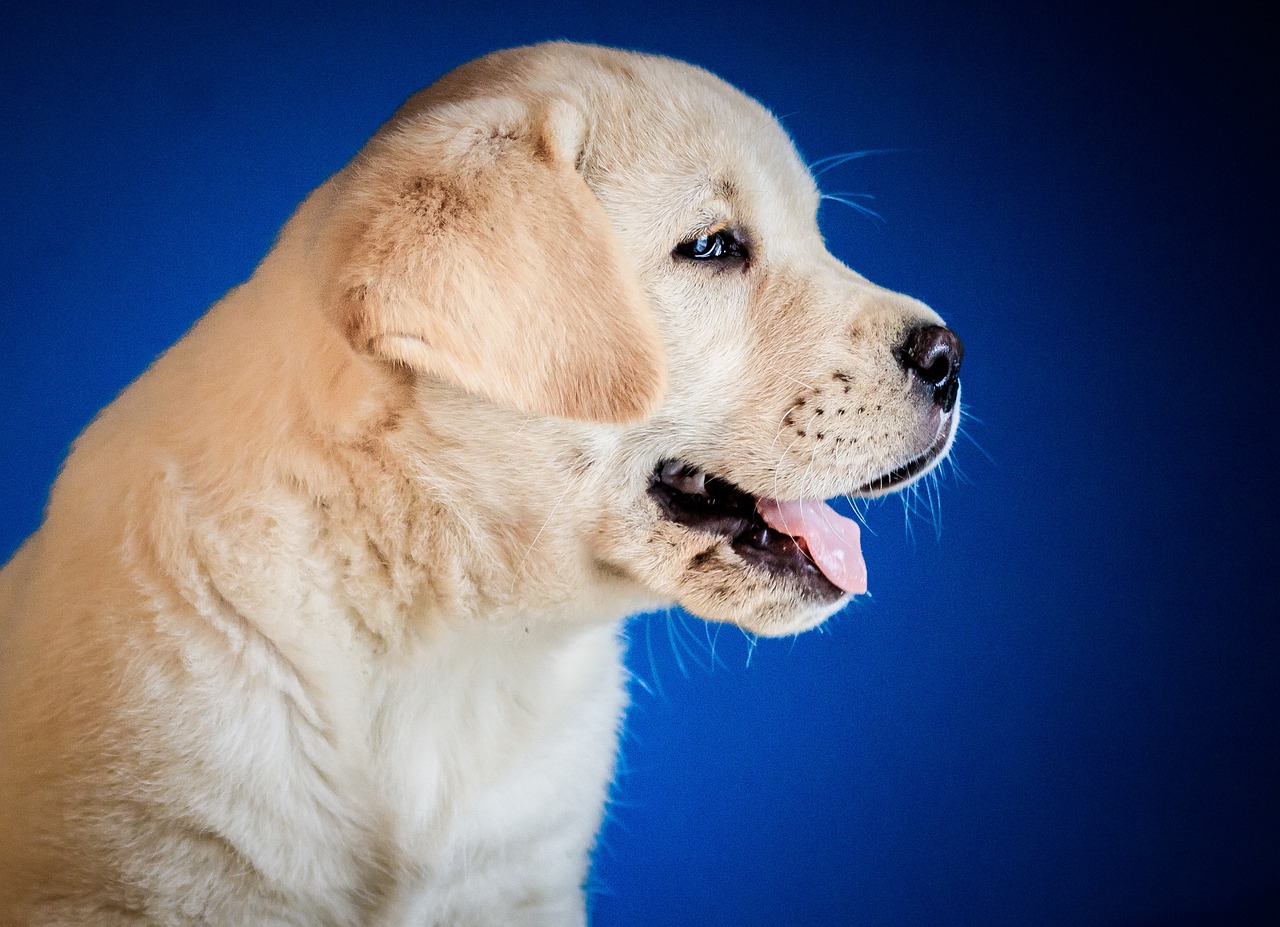sIs this America’s favorite dog any different? Is it worth the health problems it brings?
About the Labrador Retriever Full-Sized
Labrador Retrievers are ancestors from Newfoundland in Canada. They were initially used by Canadian fishermen as water. However, in the 1800s, English gentlemen fell for these puppies and brought them back to England.
The Labrador’s adorableness, friendly and outgoing nature have made it America’s favorite dog since 1991. Today, there are two types of Labradors: English and American. Officially, the Mini Labrador doesn’t belong to a different breed or type. In a moment, we’ll explain why.
American Labrador
The American Lab is energetic and agile. It was bred more to improve its retrieving abilities than its looks. These dogs were not pets, but hunting companions. They were expected to be strong and agile .
English Labrador
The English labs, on the other hand, are lighter, shorter, and calmer. These puppies were often taken to dog shows and were bred as pets. These puppies are the ideal pet for families with young children or first-time owners.
What is a Mini Labrador Retriever, and How Does It Work?

Miniature labs can be used in the same way as regular ones, but they are friendly and playful. They are, however, a little shorter.
These Labradors are not recognized as a distinct breed. This is due to the dogs’ smaller size. It often happens because of canine dwarfism. This is a genetic mutation that causes the legs to become shorter.
History of the Mini Lab
We know that the Labrador ancestor we now know was a smaller puppy, called the St John’s Water Dog. It was a great swimmer and was used to retrieve fish from the Canadian icy waters. British aristocrats brought the dog to England shortly after and began breeding it. The Labrador was born.
Mini Labs were popularized in the 1990s because of the desire to have the same traits in a smaller puppy. It’s unclear whether Mini Lab puppy breeding has been humane.
Mini Labrador Retriever Types and Size
There are 3 ways to breed for a smaller Labrador.
- Breeding dwarfism-prone dogs
- breeding runts
- Crossbreed Labradors and smaller breeds
It is difficult to predict the size of an adult Mini Labrador. It all depends on how the breed is selected. Unfortunately, some breeders are more concerned about their puppies’ happiness and health than they are about making a profit.
Dwarf Labrador Retriever
To have dwarfism in dogs, one of the two dwarfism genes (SD1 or SD2) must be mutated by both parents. A genetic test can determine if your dog is a carrier. If they are, they will produce dwarfism when they mate with another carrier.
This is the most popular way to breed smaller Labradors.
However, dwarfism isn’t always visible in adult dogs. While most dogs with dwarfism become smaller, some can look very similar to regular Retrievers. There is no guarantee that a dwarfism puppy will remain small.
A Labrador small can be 3-10 inches shorter than an average Labrador and weigh 20-40 pounds less than the average Labrador. The difference isn’t always significant, as you can see.
A majority of dwarfism-related diseases are caused by a genetic mutation. This should be enough to deter you from buying a dwarf puppy. Intentionally breeding diseased dogs is inhumane.
Runt Labradors
You’ll often find some doggies smaller than others in every litter of puppies. These are called “runts”. Mini Lab dogs who were the runts of the litter are normally healthy and normal.
These smaller pups often get pushed aside by their siblings and are left to eat last from their mom. Low milk intake can cause a decrease in immunity and malnutrition.
The result of breeding runts could be puppies with immune dysfunction.
Crossbreed Labradors
You can also crossbreed Labs with smaller breeds such as the Corgi to get small Labrador Retrievers.
Many believe that this reduces the chance of puppies inheriting pre-existing genetic conditions. However, there are no scientific studies to support this.
Crossbreeding is risky and unethical. A tiny breed mother may struggle to give birth to large puppies. Crossbreeding is also a common practice, with 2.6 million puppies being sold every year.
Adopting is a better option than buying a dog at a pet shop. Adopting a dog is the best and noblest way to take care of it.
Temperament and personality
Miniature Labrador puppies are almost identical to regular-sized Labradors. They are a great Labrador temperament, and they need less space.
Miniature labs are just as playful and active as their larger counterparts. The Labrador Retriever is a great dog for apartment living. They are social, calm, loyal, and social. They are good with children and love to be around other dogs.
The Mini Labrador is equally as smart. Mini Labradors are intelligent and enjoy pleasing their owners. They are also great at obedience training and trick training.
Common Health Issues and Lifespan

Mini Labradors are susceptible to many health issues. They can even reduce a dog’s lifespan depending on how they are bred. Mini Labs with dwarfism live for five years while Labrador Retrievers can live up to 10-12 years.
Miniature Labs are also susceptible to hip dysplasia and obesity, as well as breathing problems.
Limb Malformation
Labradors suffering from dwarfism have a high incidence of leg malformation.
Skeletal Dysplasia, which is mutated by the SD2 gene, can cause short legs. However, most symptoms are mild. But Osteochondrodysplasia (mutated SD1 gene) is more severe. It causes discomfort and pain by affecting the bone and cartilage growth of Miniature Labrador dwarf dogs.
Obesity
Mini Labradors can be smaller than other Labradors, but they have the same enormous appetite. This makes them more likely to overeat and obesity.
Keep a record of your Mini Lab’s calorie intake and don’t give it too many treats. A reliable dog food chart is also helpful.
Swollen Joints
Mini Labrador puppies can often develop swelling from dwarfism. This can cause severe pain and make walking, running, or playing difficult for your dog.
Mini Labs will feel better with joint relief supplements. There are three options: food, pills, or treats. You can choose what your dog loves the most or else it will be difficult to convince him.
Breathing and Skull Problems in Larger Skulls
Dogs with dwarfism are also affected by abnormal heads. This includes the muzzle. This can cause breathing problems and decrease your pet’s quality of life.
How Long Do Mini Labradors Live?
The average Labrador Retriever lives 10-14 years. Some minis live long, happy lives.
Mini Labradors suffering from dwarfism might have a shorter life expectancy. Some Miniature Labs may live for less than five years depending on their condition.
How to Care for a Mini Labrador

Mini Labs are more susceptible to certain health issues, so they require more care. Mini Labs can be just as active and happy as their larger relatives but they will need special attention to stay healthy and happy.
How Much Does a Mini Labrador Eat per Day
Labradors love food. Labradors love food and will eat anything you give them. Because of its obesity, you will have to feed your pet a restricted diet.
To ensure your dog gets the right amount of food, use a digital balance. You can also give your dog fewer treats. You can also give your pup less food at night to account for all the treats they get throughout the day.
Mini Labs Can Do a Lot
Labrador Retrievers have a lot to lose. The mini version won’t help.
Regular brushing can help you control your hairy beast. You can also look at the best dog trimmers to groom your pet at home.
A powerful vacuum is also recommended. These dogs can leave hair all over the place.
Monthly Wash
Another important part of dog care is washing your Mini Labrador. It will keep your dog clean, and it will also eliminate odors. It will also remove dandruff from your Lab’s fur and skin.
Do not overwash. For a healthy coat, your puppy needs to have natural oils in his skin. It is best to wash your puppy once a month or twice a year.
Mini Lab Alternatives
The Labrador toy Labrador doesn’t have to be the only small Labrador. These are some other options to consider when looking for America’s beloved dog.
Crossbreed
A Labrador can be mixed with a small-breed dog to achieve its beautiful personality.
These breeds may be a good choice if you are looking for a Lab-like dog but with smaller size.
- Bassador – A Basset Hound/Labrador mix
- Corgidor — a Corgi and Labrador mix
- Labradoodle – A standard, miniature or toy Poodle/Labrador mix
- Springador — A Springer Spaniel and Labrador mix
Shelter
It is possible to see a Mini Labrador at a shelter. Although dwarfism isn’t common in Labradors it does happen from time to time.
Every year, millions of dogs are put to death in shelters because they have outgrown their natural habitat.
Even if you don’t find the perfect mini pet, there are many adorable puppies waiting for you. Save a life by adopting a puppy.
Take a bow
Health complications are highly prevalent in the tiny Labrador Labrador.
Although it may sound adorable to own a Mini Lab, this breed is rare and often difficult to train.
A Mini Labrador can be just as happy and friendly as a regular-sized Labrador. It can also be just as time-consuming due to its health and hair dispersing.
Consider getting a regular Labrador before you buy a miniature version. If you don’t want to buy a mini Labrador, you can check out the local shelter. They might have a dozen smaller dogs for you.